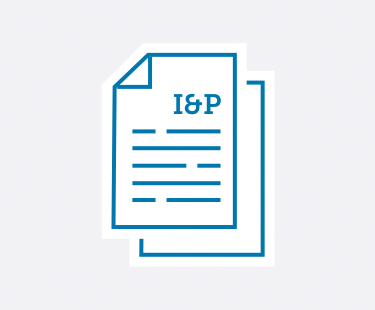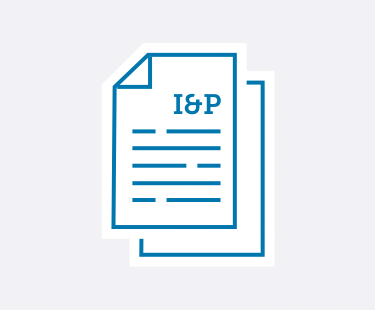

Learn practical strategies to handle emerging trends and leadership challenges in private schools.
No matter if you’re a School Head, Admission Director, Development Director, Board member, or any other private school administrator—Ideas & Perspectives®, ISM’s premier private school publication, has strategic solutions for the pervasive problems you face.
- Tuition not keeping pace with your expenses? In I&P, explore how to use strategic financial planning to create your budget and appropriately adjust your tuition.
- Enrollment dropping off? Discover how to implement the right admission and enrollment management strategies that engage your community—and fill your classrooms.
- Trouble retaining teachers? Learn how you can best support your teachers using ISM’s Comprehensive Faculty Development framework. Your faculty members will become more enthusiastic about their roles—which ultimately improves student outcomes.
- Fundraising campaigns not as successful as you’d hoped? Implement ISM’s practical advice and guidance to build a thriving annual fund, construct an effective capital campaign, and secure major donors—no matter your community size or location.
- Not sure how to provide professional development—for you and your staff? Learn ways to develop and fund a successful professional development strategy. You can improve teacher-centered satisfaction and growth, which in turn strengthens student-centered learning.
- Problematic schedule? You can master the challenges of scheduling with the help of ISM’s practical advice, based on our experience with hundreds of schools and our time-tested theories.
- And so much more.
I&P has shared targeted research, up-to-date insight, and sound theory with school leaders since 1975. More than 8,500 private school decision-makers find the answers to their schools’ administrative and governance matters in our advisory letter. We give you the strategic answers you need.
As an ISM Silver or Gold member, you not only receive issues online and in print 10 times a year, but you have access to 900+ articles in our web archive. Need help? It’s at your fingertips! Learn more and sign up for ISM's membership here.
Search
See the articles from our latest issue of Ideas & Perspectives.
Strategic Board Steps: Revitalize Your Committee on Trustees
Volume 39 No. 9 // July 21, 2014
If you, as Board President, are confident that your current strategic plan/strategic financial plan meets the criteria spelled out in the No. 2-ranking marker in the ISM Stability Markers®, revisit your Committee on Trustees’ structure and function to determine whether this crucial committee needs revitalization. If you seek to lead your Board forward as a truly strategic entity—one focused upon long-term financial and organizational stability—then the Committee on Trustees (COT), your Board’s “most strategic” committee, must be appropriately staffed and charged.
1. Already a member? Click here to login.
2. Not a member? Click here to become a member.
3. Not sure? We'll help you figure it out.
The Case for Hiring an Acting or Interim Head
Volume 39 No. 9 // July 21, 2014
A sequence of qualified, effective Heads who stay six years or more—with a series of orderly transitions—is the best-case scenario for any private-independent school. However, in given situations, a temporary replacement can be necessary, appropriate, and advantageous. In the most common circumstance, the school faces a vacancy relatively late in the school year, leaving insufficient time to conduct a careful search for a permanent Head. In other instances, the Board may have conducted a Head search without reaching a clear decision or identifying a need for a hiatus between permanent Heads. Perhaps the Board has decided to postpone an all-out search to test the qualities of an administrator already at the school.
1. Already a member? Click here to login.
2. Not a member? Click here to become a member.
3. Not sure? We'll help you figure it out.
Land Acquisition Plans: Context and Action
Volume 39 No. 9 // July 21, 2014
How much land is enough? ISM has long recommended that schools acquire a minimum of 40 acres (and ideally 100+ acres). This is particularly true where the school is (or includes) an upper school with its enormous athletic needs. In all our work with schools, ISM has not encountered one that complained of owning too much land, but has found many that regret not acquiring land when they had the opportunity. Today, of course, land is so much more than athletic fields. Schools see the importance of outdoor classrooms, adventure playgrounds, organic gardens, ecological preserves, wetland conservation, and so on.
1. Already a member? Click here to login.
2. Not a member? Click here to become a member.
3. Not sure? We'll help you figure it out.
The ISM Stability Markers: The Fourth Iteration
Volume 39 No. 8 // June 16, 2014
The third iteration of ISM Stability Markers® comprised 18 variables, each of which, according to ISM’s internal reviews, correlated strongly with a private-independent school’s ability to sustain excellence over time. In the fourth iteration, no additions or subtractions have been made to the 18 third-iteration Stability Markers themselves. The new scoring structure does, however, better align with ISM’s Success Predictors™. Benchmarks, weighting, points of reference, and/or methods of calculation have been updated to conform to ISM’s current perspectives on each. And one of these updates can be considered major: the movement of two first-tier markers (No. 5 and No. 6) to the second tier, replaced in the first tier by two previously second-tier items.
1. Already a member? Click here to login.
2. Not a member? Click here to become a member.
3. Not sure? We'll help you figure it out.
Finding ‘Out-of-Office’ Time for the School Head
Volume 39 No. 8 // June 16, 2014
School Heads usually find that their days are replete with meetings of varying length—some scheduled and some of the “have-you-got-a-minute?” variety. Depending on the Head’s personality, there could be additional self-assigned expectations. The upshot of attending to these expectations can fill (and, in ISM’s experience, over-dominate) a Head’s day, week, month, year—leaving precious little time available for reflection or opportunities to leave the office. The Head must occasionally get out on campus and gain a sense of the current rhythms of the school—those rhythms that are strumming across the campus while the students are present. Because the school day is the Head’s business day and corresponds with others’ business day, the Head’s time is often consumed conducting “official business,” meeting the needs of others as well as the needs of the school and its students, faculty, and staff.
1. Already a member? Click here to login.
2. Not a member? Click here to become a member.
3. Not sure? We'll help you figure it out.
Facilities Management for the Year-Round School
Volume 39 No. 7 // June 2, 2014
While schools continue to consider the year-round school in their academic programs, you, as Business Manager, know that schools are already operating 50+ weeks of the year. The resulting lack of down time makes it difficult to carry out ongoing maintenance, significant repair tasks, deep cleaning, adaptation, renovation, and construction (inside buildings, on building exteriors, and outside around the campus on athletic facilities). Yet, the fiscal and parental demands for ongoing use of the facility are not going away.
1. Already a member? Click here to login.
2. Not a member? Click here to become a member.
3. Not sure? We'll help you figure it out.
The Academic Administrator Stance
Volume 39 No. 7 // June 2, 2014
The overriding responsibility of those who supervise faculty is to increase their capacity and hold them accountable—this is not negotiable. In ISM’s Comprehensive Faculty Development (CFD),1 it is clear the evaluation process and the growth and renewal process are the two key aspects of this singular task (i.e., the way in which to do it), with the Characteristics of Professional Excellence acting as the glue to tie it all together. As Division Heads (and other academic administrators) approach their task, it is important for them to have a stance or attitude with which they come to faculty evaluation/growth and renewal.
1. Already a member? Click here to login.
2. Not a member? Click here to become a member.
3. Not sure? We'll help you figure it out.
Right-Sizing Your Board
Volume 39 No. 7 // June 2, 2014
Private-independent school Board Presidents often ask, “What is the right size Board for a school with our enrollment and grade configuration?” For those Board Presidents seeking to implement ISM’s “strategic Board” concepts and practices, our standard answers include the following. There is little relationship between school enrollment and school grade-configuration, on the one hand, and the number of Trustees needed to do the work of the Board, on the other. Board structure and function are factors almost entirely independent of school size and student age-range. That said, ISM’s second-level answer to the question is this: The work of the Board normally requires about 15 to 20 people annually immersed in “doing governance.”
1. Already a member? Click here to login.
2. Not a member? Click here to become a member.
3. Not sure? We'll help you figure it out.
Strategies for Reducing Late-Summer Faculty Resignations
Volume 39 No. 6 // May 12, 2014
Private schools can suffer late-summer teacher resignations, often in August, mere weeks before the start of the new school year. Despite having signed a contract, a teacher may leave your school to work at another school, or even pursue another career—forcing you to find an immediate replacement. What can your school do to develop a plan of action to prevent this from happening?
1. Already a member? Click here to login.
2. Not a member? Click here to become a member.
3. Not sure? We'll help you figure it out.
Leadership Findings: A Review
Volume 39 No. 6 // May 12, 2014
Outcomes of ISM’s School Head leadership research projects remain in routine use in the form of ISM surveys, usually in conjunction with the electronic scoring of the ISM Stability Markers®. The leadership projects’ outcomes comprise ISM Stability Marker No. 3. This article offers a brief review of the findings, all published previously in I&P. ISM’s leadership findings are divided almost evenly between “leadership points of emphasis” that high-rated School Heads routinely employ, and “leadership traits” characteristic of high-rated School Heads. Said differently, one group of findings summarized the sorts of things that Heads rated highly on leadership tended to do, while the other group of findings summarized the sorts of things that Heads high-rated on leadership appeared to be.
1. Already a member? Click here to login.
2. Not a member? Click here to become a member.
3. Not sure? We'll help you figure it out.


